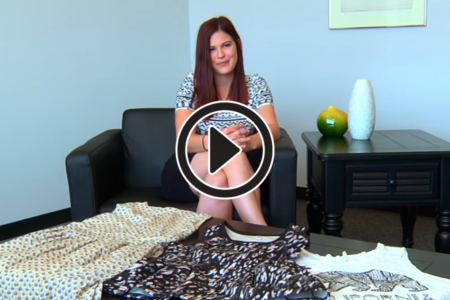Virtual Learning. It’s become the bane of our existence.
As parents, we are watching our children struggle while we struggle with them. Our children are having a hard time paying attention, finding assignments, completing them, and turning them in via virtual learning. It requires additional skills such as typing, navigating email, portals such as the Google Classroom and grading portals. Prior to the pandemic, many of our children entered into the classroom, were supervised during each task, had the ability to ask questions, and were provided with handouts that they were able to complete and return without forgetting to click “Turn In.”
For middle school students and high school students, it is difficult for our children to sit for hours and complete written or online work. For example, if your child has ADHD, sitting at a desk or table for several hours will likely result in lost periods of time staring out the window, chatting with friends, or even staring at the riveting ceiling fan.
For younger students, it’s difficult to cover the multiple demands of being a student with little teacher assistance through a computer. Our young children are required to type some of their responses, or even essays. How many children in kindergarten do you know who are proficient typists? Not many. That leaves parents to type their children’s answers or incomplete assignments if parents are not available.
With teaching taking place via video screen, there is plenty of room and time for our children to log on to YouTube or watch videos while appearing to be present and attentive in class. For many adolescents and young adults, they are struggling to get started on assignments and end up having multiple missed assignments which is resulting in lower grades than in past years. Low motivation and anxiety and depression are also on the rise for many of our children. They miss seeing friends, walking to school, getting on and off the bus, participating in specials and playing on the playground.
1. Support Plans
For many of our children, they are still resisting our efforts to assume the role of instructor to our children. If your child has an Individualized Education Plan (IEP), your efforts as fill-in teachers are even more challenging. So how do we make the most of virtual learning for children with an IEP?
Contact your child’s teachers for one-on-one video time where they can re-teach a concept or help your child to work on a homework assignment or paper. This is also the time when our children are struggling with sitting for long periods of time to work on classwork or homework. Talk to your child’s teachers about creating multi-sensory methods of teaching. Ask teachers to read out loud and work through writing assignments with your child.
Set up new accommodations that will meet your child’s needs now as they are manifesting. For example, decrease the number of problems required to complete an assignment if your child is showing anxiety. That is, ask for an amendment to your child’s IEP to include decreased number of items to be completed by 30% or 50% and other accommodations.
2. Create the Atmosphere for Productivity
If your child is working in the middle of the kitchen, perhaps it’s time to create a quiet workspace designed for your child with his or her materials. That is, find a small space or corner where you can set up a desk or table with a schedule, computer, pencils, and paper. Sometimes, it’s also helpful for your child to have multiple working stations to which they can move around during the day or from day to day.
3. Find a Routine and Stick To It
Stick to a bedtime and wake up time so that there is consistency and predictability to each school day, just as it would be if your child was physically going to school, all day, everyday.
Each morning, encourage your children to get dressed and eat breakfast at the same time. Even though we may not be leaving our homes, it’s important that we mentally differentiate between home and school. If your children want a designated pajama day – go for it!
If your child wants to stay up late, he can do that on a Friday night or Saturday night, but it’s important for your child to get enough hours of sleep as the amount of stress we are all feeling right now is high.
4. Take a Break
If your child is working with an occupational therapist at school, ask for a list of exercises and incorporate sensory breaks in between subjects. Or you may wish to incorporate movement and sensory exercises to give your child the time to gain sensory input as needed in order to improve attention and regulation. Art or music assignments can also be incorporated into “breaks” which can be completed by standing at the counter (aka – a standing desk) for your child who needs to work on something that is not based in reading and writing.
5. Create a Visual Schedule
For children who are following the hybrid learning model, remembering what the schedule looks like from week to week can be anxiety-provoking explained. If your child’s schedule looks anything like my son’s, it rotates every day with his morning and afternoon classes being swapped. To help students adjust to these changes, set up your child’s daily schedule in plain view so it can be referenced whenever needed. Set up a whiteboard or a poster board for the day with your child so that he knows what his schedule will look like each day of the week.
6. Declutter Your Kid’s Space
For children who have attention disorders, keeping the distractions to a minimum is key. Because students have easier access to things like video games and cell phones, it’s important to eliminate temptations as much as possible.
If your child is working in his room, this may be a good time to look around and declutter the space. Put away all the items that could serve as distractors, or at least keep them out of sight. For example, if your son’s Nintendo Switch is within sight, he may want to reach for it when he’s feeling overwhelmed or bored with an assignment.
Place items within drawers or bins under the bed or in the closet to create a visually under-stimulating environment. If possible, place your child’s desk against a wall and avoid windows, as they also serve as distractors.
7. Set a Timer
Depending on your child’s disability, staying on task and managing their time can be especially challenging while learning virtually. Many of our children become overwhelmed when they look at their email or Google classroom and notice how many assignments they may have. For kids who struggle with anxiety, ADHD, or dyslexia, setting up a timer for each assignment will help children cultivate time-management skills. It also puts an end time to any assignment that your child doesn’t want to begin. This will serve to improve attention and motivation to assignments.
Dr. Liz Matheis is a licensed Clinical Psychologist and certified School Psychologist who specializes in working with children with ADHD, Anxiety, Autism, Learning Disabilities, and behavioral struggles. She is also mom to three children, one with special needs. Her practice, Psychological and Education Consulting, is located in Livingston, New Jersey.




























